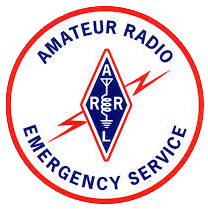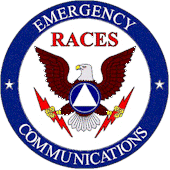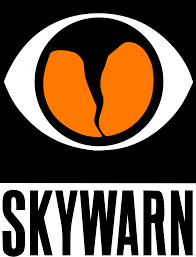Introduction to Winlink
- Details
- Published: 04 March 2021
Introduction To Winlink
Winlink is an global radio based email system (and more); used by amateur radio operators, government entities, NGOs, and mariners. Each of these groups utilizes radio bands appropriate to their licenses, but despite that, they can communicate with each other and any other email user, across these different environments and conventional internet.
WInlink consists of a network of UHF/VHF and HF stations that can send, receive, and relay email messages via radio and internet. HF and VHF stations are scattered all over the world, acting as gateways to Winlink email servers, allowing radio-based Winlink stations to send and receive email over this world-wide radio network.
Any ham radio operator can setup a Winlink client which will allow them to use a This email address is being protected from spambots. You need JavaScript enabled to view it.email address. For example, my email address is This email address is being protected from spambots. You need JavaScript enabled to view it..
Programs such as Winlink Express, Airmail, and pat (for Linux) can all be used to send email via radio or directly over the internet using the internet "telnet" protocol.
Severe Weather Awareness Week
- Details
- Published: 04 February 2021
Various National Weather Service offices sponsor severe weather weeks, and the Peachtree City office usually hosts theirs during the first or second week of February.
Each day covers a different topic related to weather safety. As potential resources during severe weather as storm spotters, safety at home must always come first, and is a necessary prerequisite to being able to spot and participate in severe weather nets.
This year's topics are: Family Preparedness, Thunderstorm Safety, Tornado Safety, Lightning Safety, and Flood Safety.
Family Preparedness - More Information.
- Make A Plan - Ensuring the family is all on the same page regarding where to go and what to do in different circumstances.
- Build A Kit - Have items you'll need during an emergency, such as flash lights, first-aid kits, water, food, games to entertain the kids, etc.
- Be Informed - Have at least one weather radio handy, and an amateur radio as well.
Thunderstorm Safety - More Information.
Power Source Considerations
- Details
- Published: 23 July 2020
A recent round-table discussion on portable operation with limited power and its application in EMCOMM resulted in a question about solar power as a sole power source for Summit or Parks on the air operation. The question prompted a whole line of reasoning about not just alternative power, but the many factors involved in selecting and utilizing a variety of power sources.
Volts & Amps & Watts (Oh, my!)
The first thing to determine is the voltage and current demands you have to operate as planned, or the voltage and current limitations you face and must operate your equipment within. In an ideal situation you control the former, in some situations, such as EMCOMM, you may need to operate at the limits of the latter.
Since most amateur radio systems can operate off 12 volts (or something around 12 volts, usually ranging from 12-15V), you will normally be working with voltage in that range. If not, then you'll have to ensure voltage is somewhere within the range your equipment will handle. Handhelds, for instance, will often operate at lower power with as little as 7.2 volts input.
Net And Repeater Practices
- Details
- Published: 17 September 2020
This material was inspired by "Seven Tips For Better Repeater Operating" published in ARRL's "On The Air" magazine. I've consolidated some of theirs, left some off, and added some of my own.
In previous presentations I've discussed how we often become complacent, or sloppy, in maintaining or testing our equipment for proper operation. Without maintenance and testing we often discover "sudden" problems with our equipment that really had been creeping up on us over time; usually poor antenna connections, dirty power connectors, etc.
Likewise, over time we can develop some poor habits when operating over a repeater, or as a participant in a net, forgetting (or maybe never learning) good repeater courtesy and operation. Here are a few things to keep in mind when participating in a net or "rag chewing" on the drive to the grocery store. We've all been guilty of some of these at some point in time.
1) Pause after keying and before speaking. Believe it or not, the repeater does not begin retransmitting what your are saying the moment your thumb hits the transmit button on the microphone! It's true. Not only that, it doesn't start retransmitting at the moment you actually push the PTT (Push-To-Talk) button. It actually takes a little time for the repeater to recognize a signal is coming in, check for the tone signal, and then engage the transmitter.
Summits & Parks On The Air and EMCOMM
- Details
- Published: 16 July 2020
I usually do a "Field Day & EMCOMM" presentation right around Field Day, highlighting how Field Day is good practice for deploying Amateur Radio in an emergency. But the recent West Georgia Amateur Radio Society presentation by WD8LQT about Summits on The Air brought to mind how much both Summits on The Air (SOTA) and Parks on The Air (POTA) also provide valuable EMCOMM experience for both those taking to the field and chasers at home in their shacks,
Both SOTA and POTA, like Field day test our ability to setup, troubleshoot, and operate radio equipment in a remote location in a short period of time. The short setup and operating windows, remote location, and the additional challenge in many cases of having to pack up gear for for use at the remote location is great practice for prepping for being deployed.
Both SOTA and POTA allow you participate as a field operator or at home. In the case of the person in the field, the location may be a relatively easy one accessible by car, or as challenging as a multi-day backpacking excursion. In the latter case, learning to pack up for an extended field trip would be very educational if you were to ever be field deployed to a disaster area. Remember, one of the tenets of EMCOMM deployment is to be as self-sufficient as practical, so as not to put further demands on resources in a disaster area.






